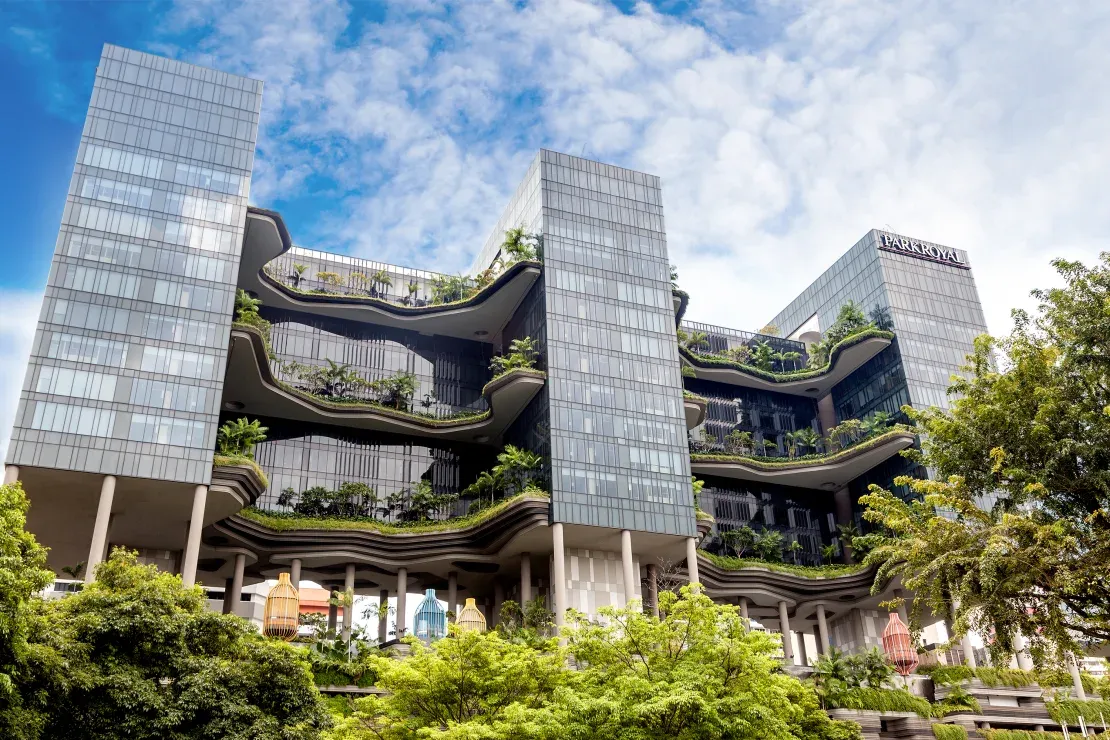We Don't Have A Plan B.

It comes to a point where we need to realize that we don’t have another planet to move to if we ruin this one. There truly is no plan B. I honestly feel that taking care of planet Earth should be every single architect's number one goal when it comes to design. Traditional construction doesn’t address issues of carbon footprint, waste and resource depletion well enough and according to the UN Environment Global Status report from 2017, “building and construction account for more than 35% of global final energy use and for nearly 40% of energy-related CO2 emissions” (Barker Associates, 2022). In this post, I want to give current and future architects a perspective on how we can design differently to help our planet live a longer and healthier life!
For starters, materials need to be chosen carefully when building. Materials such as reclaimed wood, recycled metal, bamboo, and eco-friendly concrete would be highly beneficial to the environment and would reduce the amount of damage we do to our environment. Let me give you examples that are more practical so you have no choice but to do it. Think about concrete, many people don’t think concrete can be replaced with anything sustainable but I promise you it can, it can be replaced with hempcrete which is made of hemp, lime, and water like in Figure 2 (Hohenadel, 2024). Plastics is another thing we often think we can’t find an alternative for but instead of conventional plastic, we can use “innovative bioplastics made from algae” (Hohenadel, 2024). According to Kalina Prelijik on Architizer, we should also make use of demolition companies around us, partnering with them to get the reclaimed materials I mentioned earlier. Taking these steps will not only impact the environment positively but also add a sustainable touch to our work.
Another key measure that needs to be taken is to have energy efficient buildings. This means having a goal to reduce really harmful carbon emissions while still producing enough energy for the building. Ways that we can do this is to “evaluate the natural resources available on your site, such as solar, wind or geothermal energy and integrate the appropriate technologies to generate power directly from your surroundings” (Prelikj, 2024). It not only will reduce carbon emissions but also end up being really cost effective for the client in the long run. I would also like to add on water conservation because it ties into the consumption and conservation topic. It’s also important to consider how your design will conserve water and some examples of this are rainwater collection systems, recycling greywater for irrigation and flushing, as well as designing a sustainable landscape. In the case of water, the pavement will need to be permeable, allowing the water to go through to the reservoir.
Allow me to just quickly mention a specific case study, because as I was reading Sustainable Architecture: Contemporary Architecture in Detail by The Plan, this amazing sustainable design came up. Taller de Arquitectura X's "Torre 41," an office skyscraper in Mexico City merged nature with urban design in a way I have never seen before, in Figure 3 & 4 you can see the seamless integration. You see, another aspect of sustainable architecture is green spaces creating a space where our buildings are not interfering too much with the environment's biodiversity.
In conclusion, please let us keep in mind that the world really does need to be cared for because we truly have no plan B! We can’t just decide to leave this planet and go to the next if we mess this one up. While architects of the past built with sustainability in mind without even realizing it, today’s modern architects must be even more intentional. The choices we make now will definitely have an impact on our future, so let us stay vigilant and innovative.
Sources:
Bailey, K. E., & The Plan, editor. (2021). Sustainable architecture : contemporary architecture in detail / edited by The Plan ; translators, Kieren Edward Bailey [and 3 others]. Hoaki Books, S.L.
Barker Associates. (2022, August 25). What is Sustainable Architecture? https://www.barker-associates.co.uk/service/architecture/what-is-sustainable-architecture/
Ecomerchant Blog Editors. (n.d.). The 7 essential elements that make your building sustainable. Ecomerchant Blog. https://www.ecomerchant.co.uk/news/the-7-essential-elements-that-make-your-building-sustainable/
Hohenadel, K. (2024, October 15). Want an eco-friendly home? everything you should know about sustainable architecture. The Spruce. https://www.thespruce.com/what-is-sustainable-architecture-4846497
Prelikj, K. (2024, June 25). 18 ways to make your designs more sustainable. Journal. https://architizer.com/blog/inspiration/industry/architects-guide-make-more-sustainable-building-designs/
University of Oxford. (n.d.). Sustainable buildings. Sustainability. https://sustainability.admin.ox.ac.uk/sustainable-buildings#tab-1040376
List of Figures:
Figure 1 - Getty Images. (n.d.). PARKROYAL Collection Pickering hotel [Photograph]. In CNN Style. Green buildings: 18 examples of sustainable architecture around the world. https://edition.cnn.com/style/article/green-buildings-world-sustainable-design/index.html
Figure 2 - Tao Climate. (n.d.). [Photograph]. In Hempcrete: A sustainable revolution in the construction industry. https://taoclimate.com/hempcrete-a-sustainable-revolution-in-the-construction-industry/
Figure 3 - Koitani, Y. (2014). Torre 41 [Photograph]. ArchDaily. https://www.archdaily.com/583526/tower-41-alberto-kalach
Figure 4 - Koitani, Y. (2014). Torre 41 [Photograph]. ArchDaily. https://www.archdaily.com/583526/tower-41-alberto-kalach




